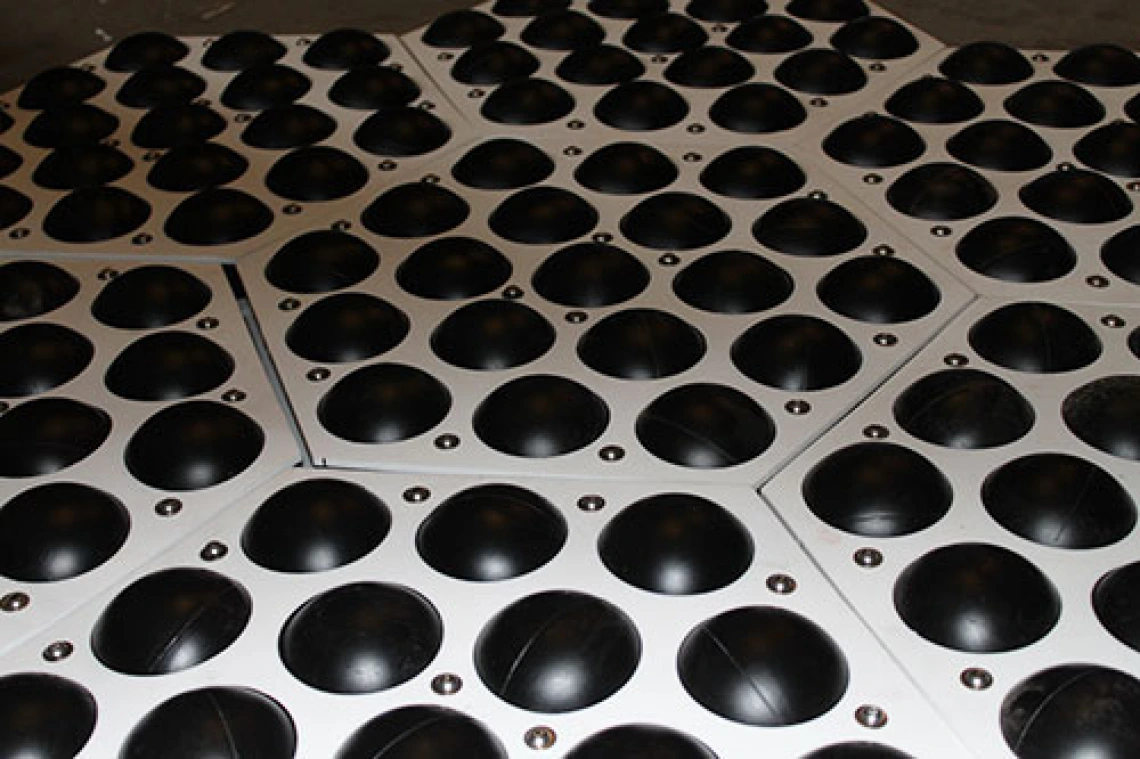UA Invention Offers Environmental Impact, Water Conservation and Solar Energy Generation

Image credit: RePower Design
Tucson, Ariz. – A new technology invented at the University of Arizona offers a positive environmental impact by slowing the evaporation of water from bodies of water like mining tailings ponds and reservoirs, while simultaneously generating solar energy.
The invention, called “Hexocover(link is external),” consists of floating hexagonal plastic panels that sandwich 4-inch balls that link together to form a cover to prevent evaporation. The panel design addresses the need for mobility through the inclusion of a propulsion system as well as GPS, so they can be built to be remotely configurable. Further, when configured with solar cells, the panels can generate electricity.
The cover minimizes water evaporation, the high cost to replace that water, mine energy costs, and in the end, minimizes the overall environmental impact of such operations. With such features, the market possibilities grew to address similar needs for other types of bodies of water, such as reservoirs and swimming pools.
Developed by Moe Momayez, Ph.D., in the Department of Mining and Geological Engineeering in the UA College of Engineering, and Nathan Barba, managing partner at RePower Design, Hexocover is the result of their effort to find ways to conserve water in mining tailings (remediation) ponds.
The company worked with Tech Launch Arizona, the unit of the UA that commercializes inventions emanating from University research, to execute an exclusive license bring the invention to market.
The licence grants RePower Design the sole right to commercilize the technology, which includes both the floating panel design as well as the solar panel integration. The company has already begun developing products based on the patent, which Tech Launch Arizona filed on behalf of the UA in the summer of 2014.
According to Barba, Tucson has an evaporation rate of 109 inches per year; water in storage facilities and reservoirs, always needs replenishment.
“We needed a way to prevent the evaporation of (tailing pond) water, but we needed a system that could move out of the way when the tailings are being released into the ponds,” says Barba. “If we can cover them, we can help with the devastating water shortage problem both here in the southwestern US and around the world.”
Further, they needed a system that would allow wind and rain to freely pass through.
For the past seven years, Momayez has been investigating the integration of photovoltaic (PV) panel deployment with mining land reclamation processes, mining-specific environmental effects on PV output efficiency, and geotechnical considerations related to the installation of panels on tailing slopes.
Explains Momayez, “The PV work on reclaimed mining lands has gained national recognition, and the idea to control the evaporation of the supernatant water accumulating in the middle of tailing storage facilities was a natural extension of my research and a huge step forward to save the blue gold in any open body of water in arid climates worldwide.”
“For someone who owns a water reservoir, like a a mine or municipality, this invention provides a dual benefit and a dual revenue stream,” says Barba.
“Water conservation is a societal imperative, not just in the Southwest, but around the globe,” says Doug Hockstad, director of technology transfer at Tech Launch Arizona. “Technologies like this will help save water, especially in arid environments. Since the University of Arizona has such a strong research history in this area, its exciting to see that research having a social and economic impact.”
“I’m most excited about the possibilities of fixing a big problem,” says Barba. “It’s been interesting to have this original challenge, and then see it develop and get refined and perfected, and now to see it working.”
Seed funding for Momayez’s evaporation control project was provided by the UA Renewable Energy Network (REN). UAREN Director Ardeth Barnhart said of the project, "Mining activity typically requires a lot of energy and this technology is a great example of how original ideas that develop the use of solar energy to transform industrial processes can have immediate and transformative effects on water and energy use, create positive environmental impact, and provide direct benefits to our economy.”

